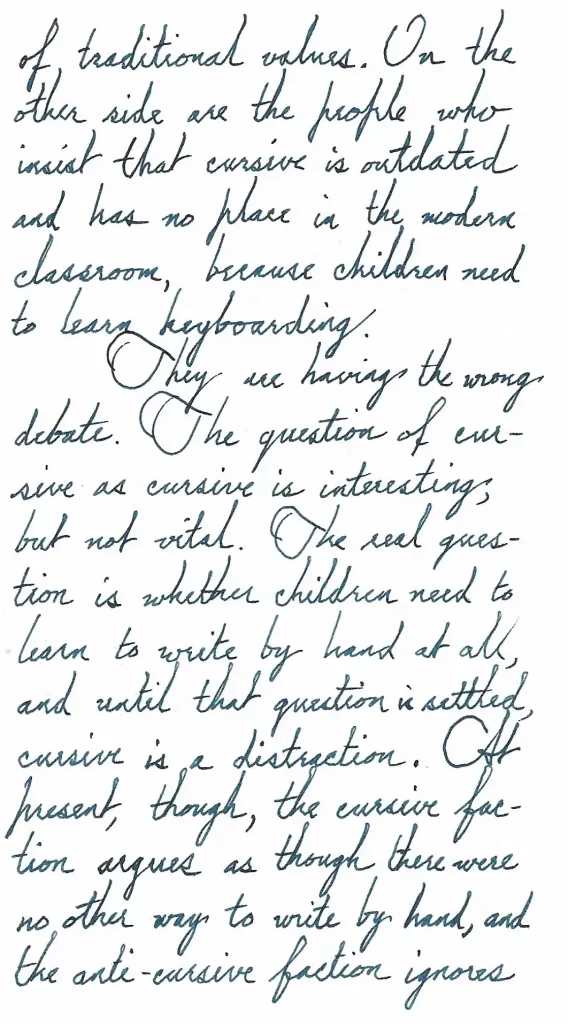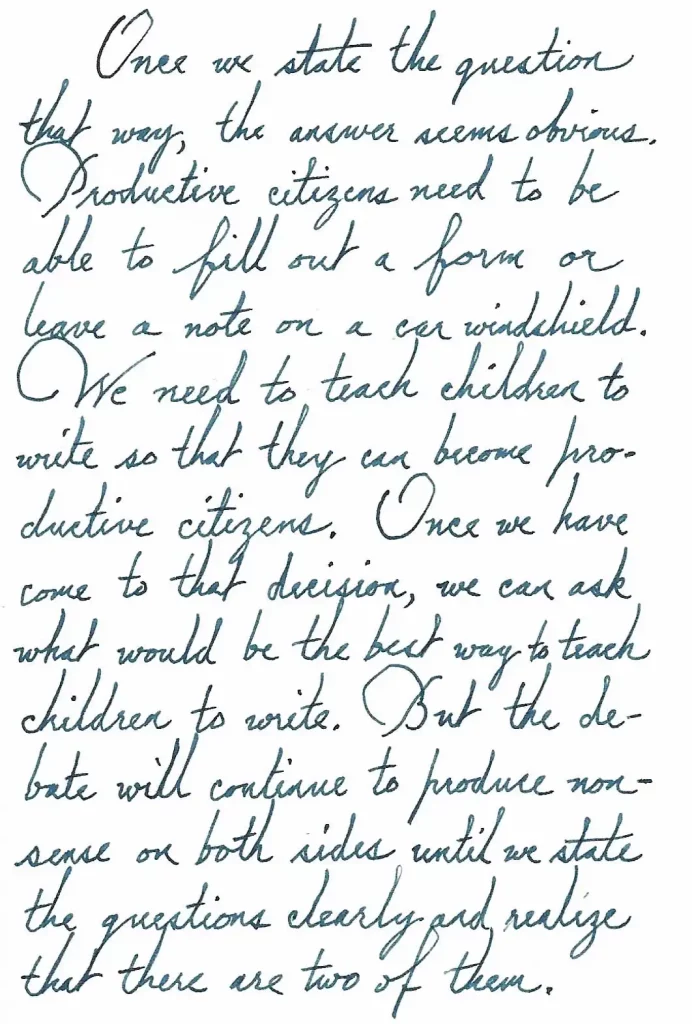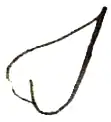





Transcribed below.
Learning to Write
How do people learn to write these days? For many, the answer is that they pick it up somewhere on the way to adulthood, but not in any formal way. Yet functioning adults are required to be able to write.
A strange debate goes on in the educational establishment. On the one side are people who insist that children need to learn cursive. They are mostly political conservatives who make cursive a symbol of traditional values. On the other side are the people who insist that cursive is outdated and has no place in the modern classroom, because children need to learn keyboarding.
They are having the wrong debate. The question of cursive as cursive is interesting, but not vital. The real question is whether children need to learn to write by hand at all, and until that question is settled, cursive is a distraction. At present, though, the cursive faction argues as though there were no other way to write by hand, and the anti-cursive fashion ignores the question of writing by hand altogether, as if no one in the modern world ever had to do that.
Perhaps there will come a time when no receptionist ever again greets you with “Fill out this form.” But that time is not now. To function in the world of today, adults need to know how to write by hand. That is a skill; it does not happen automatically once a child has learned to recognize the forms of letters. It must be learned, and schools exist to teach the things that must be learned. The ought to be teaching children to write, and write well.
But whether they ought to be teaching them to write cursive is a separate question, and the answer is not so straightforward. Our traditional English cursive is a good way of writing efficiently, but it is not the only way, and probably not the best way. There are other styles of writing that are at least as fast, and it could be argued that teaching a child two very different forms for each letter—the printed and the cursive—is a waste of effort on everyone’s part. Why not an adaptation of the Renaissance humanists’ hand that inspired our printed italics?
Now, there are many good arguments in favor of teaching cursive, and they will make a good essay on their own. But right now the question is whether cursive as cursive is necessary, and the answer is no. In fact, writing in cursive hinders communication in a world where more than half the people you meet can’t read it. The first words you’ll see at the top of that form the receptionist handed you are “Please print.”
This is why the debate over cursive is the wrong debate. The important question is whether we should be teaching children to write, not how.
Once we state the question that way, the answer seems obvious. Productive citizens need to be able to fill out a form or leave a note on a car windshield. We need to teach children to write so that they can become productive citizens. Once we have come to that decision, we can ask what would be the best way to teach children to write. But the debate will continue to produce nonsense on both sides until we state the questions clearly and realize that there are two of them.

Leave a Reply